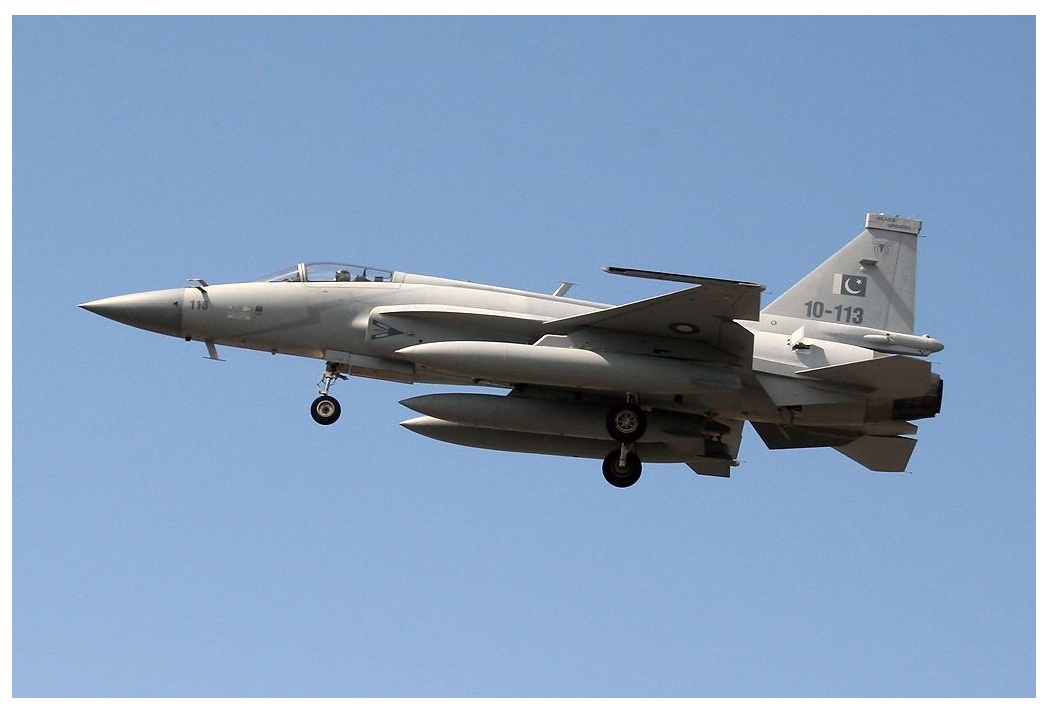CriticalThought
SENIOR MEMBER

- Joined
- Oct 10, 2016
- Messages
- 7,094
- Reaction score
- 13
- Country
- Location
KISS: Keep it simple and stupid...
KISS: Keep it simple, stupid.
Follow along with the video below to see how to install our site as a web app on your home screen.
Note: This feature may not be available in some browsers.

KISS: Keep it simple and stupid...

The difference is like the nests built by magpies and sparrows!!! Sparrows build their nests inside palaces but magpies work hard to build their own beautiful and functional nests in the open air!!!!Sitting very close to this area right now in PAC.
Just flew two missions on our simulator at APF.
Beauty or not it's our own thing.We own it and that's the beauty.

thanksTo summarize a lot of details, when done right, the cropped Delta wings of Thunder and Viper make for a highly maneuverable fighter at both high and low configurations, and very good consistent turn rate. Large Delta wings make for excellent instantaneous turn rate and provide good performance in thin atmosphere at high altitudes. The also have excellent climb rate. But their large surface area causes drag at low altitude causing altitude to drop during the turn. Cannards are a way of overcoming these problems. Think of them as equivalent to the horizontal stabilizer tails on the empennage, except they provide lift at the front, thus providing lift rather than stability. They can mess with the airflow of the main wings hence they need to be designed very carefully. In the end you live with a compromise and a complicated design. The Viper is a shining example of simple is powerful.

thanks
still doesn't answer my question though, i always thought delta with canard design is the future(hence gripen, rafale, eurofighter /90s designs), but again its PAF choice


Air breaks.. to slow down...What are those rectangular objects on the aft section???
@Windjammer @Bilal Khan (Quwa) @Oscar @messiach

when you have thrust vectoring it does the job that the canards are designed to do i.e assist in agressive manoeuvres.It's design fanaticism. How come F-22 and F-35 don't have canards? Neither does SU-35. Europeans are simply fond of their complicated design. Let's see what the new 5th gen plane looks like.

I would prefer an improvised solution with help of Both China and Turkey instead of J31.Thunder. Has. Been a huge success for you Pakistanis imo.
For a nation with such huge financial constraints this will allow you to modernize
very large fleet of of obsolete fighters .
India with five times the budget has completely failed in this regard.
IE to replace uts vintage mig fleet with a home grown or license built fighter.
Well done on thunder
All you need now is few small nod of J31 in ten years time backing up two hundred plus thunders of three blocks and maintain small fleet of falcons

They are called Air-brakes, every aircraft has them in a different location....some like the Typhoon or F-15 Eagle have one massive on the spine.What are those rectangular objects on the aft section???
@Windjammer @Bilal Khan (Quwa) @Oscar @messiach




thanks
still doesn't answer my question though, i always thought delta with canard design is the future(hence gripen, rafale, eurofighter /90s designs), but again its PAF choice

Upon research this is what I have found out; PAF has 50 Block I's which are in the process of being upgraded to Block II's. PAF is also inducting a total of 50 Block II's which will later be upgraded to Block III specs. PAF plans to have about 250 JF-17's total.I think those might be air brakes.
100+? I thought PAF had 50 of Block I...50 of Block II all of which are not yet delivered and then Block III would start.

when you have thrust vectoring it does the job that the canards are designed to do i.e assist in agressive manoeuvres.

What are those rectangular objects on the aft section???
@Windjammer @Bilal Khan (Quwa) @Oscar @messiach

Too many alerts.
These r like spoilers on civilian jets except these brakes are installed on non-lifting surfaces, increases effective linear drag, does'nt affect lift except at critically low speeds.

